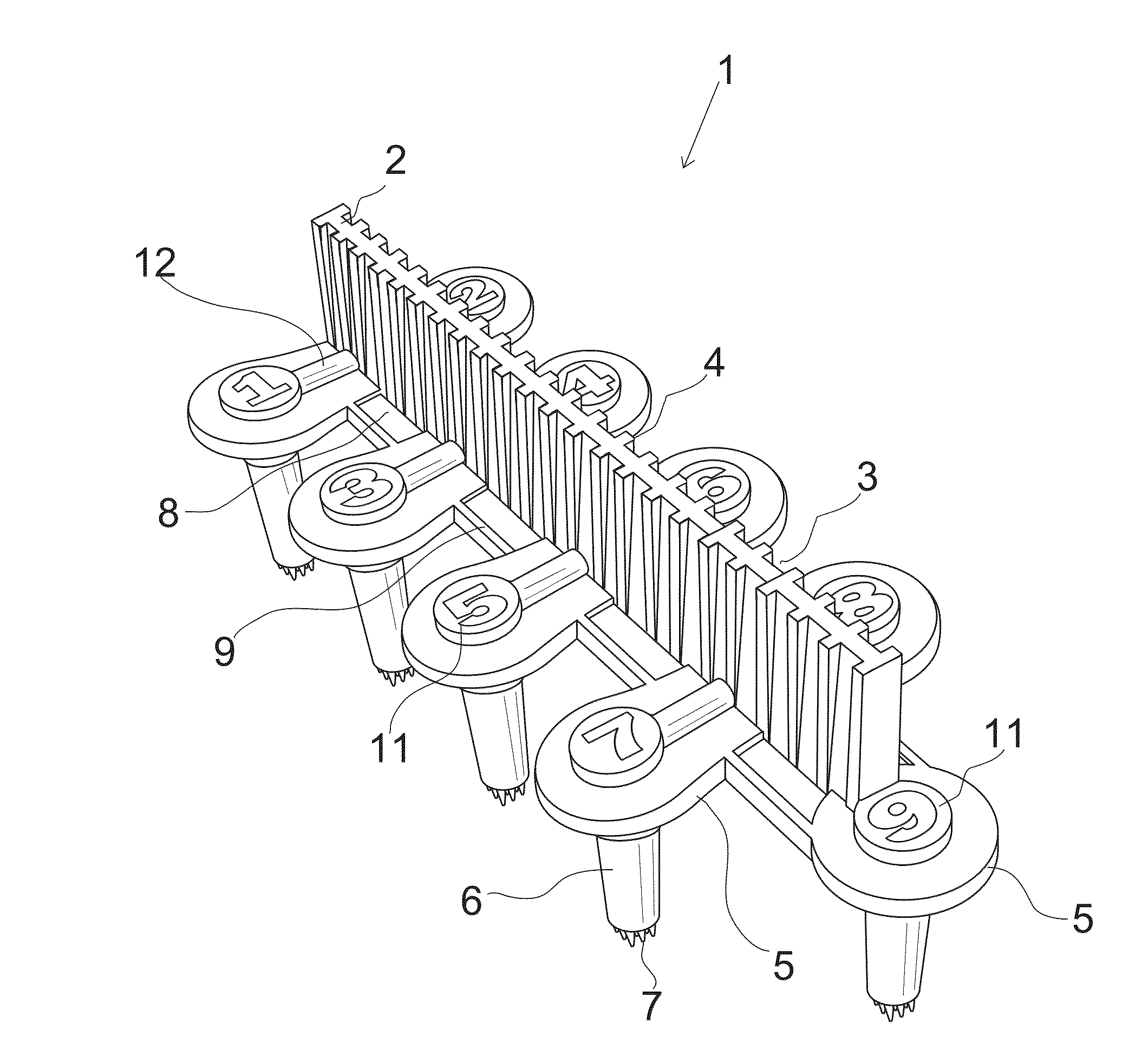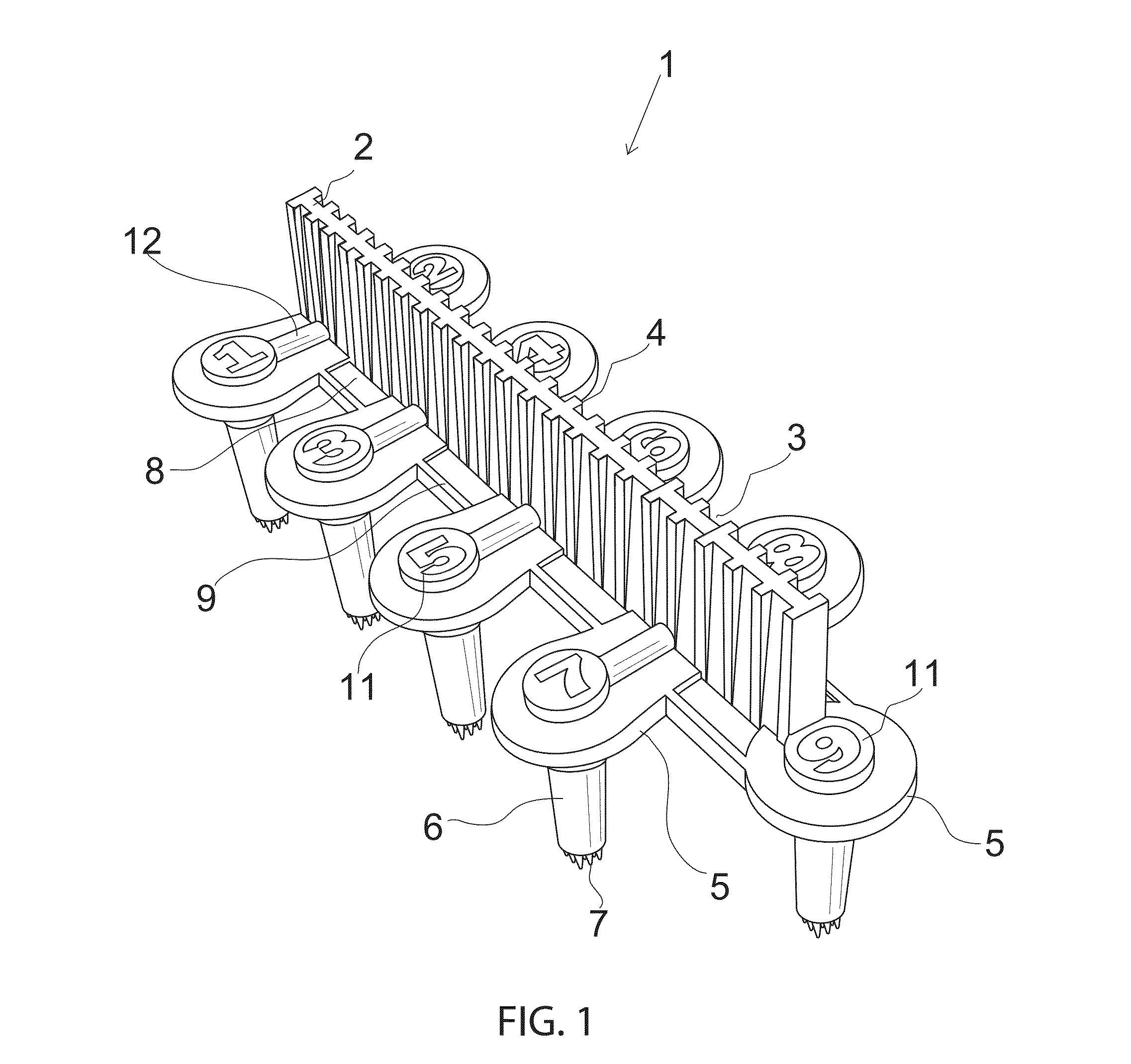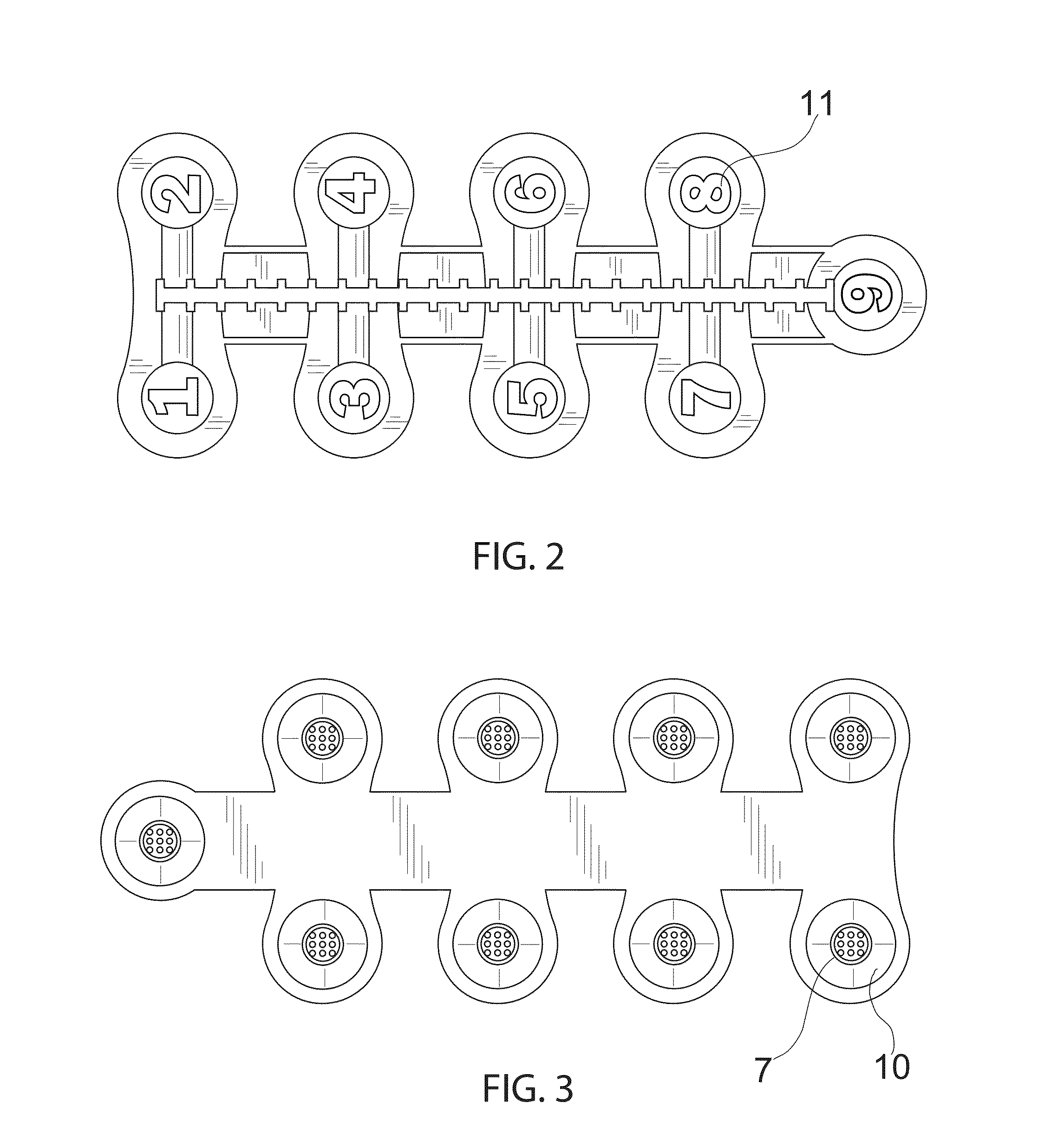Allergy testing kit
a skin testing and allergy technology, applied in medical science, surgery, vaccination/ovulation diagnostics, etc., can solve the problems of reducing the possibility of contaminating allergen extracts, commitment is a significant barrier to non-specialist adoption of allergy skin testing, and reducing so as to reduce the time for a multiplicity of tests, the effect of simplifying and using the invention
- Summary
- Abstract
- Description
- Claims
- Application Information
AI Technical Summary
Benefits of technology
Problems solved by technology
Method used
Image
Examples
Embodiment Construction
[0057]Referring now to the figures of the drawings in detail and first, particularly to FIGS. 1-6 thereof, there is shown an applicator 1 having a handle 2 that spans nearly an entire length of the applicator 1 and forms a rigid structural spine. The handle 2 has relatively deep grooves 3 and ribs 4 across its entire length, cut at 90 degrees to the handle 2, so as to provide a good engaging surface that will enhance a user's grip, especially for users wearing protective gloves. The handle 2 has a height H of 9 / 16″ but can be in a range of 7 / 16″- 13 / 16″ ideally (see FIG. 5). A plurality of arms 5 extend outwardly from the handle 2. The arms 5 are disposed in an asymmetric configuration around the handle 2. Leg like structures 6 extend downwardly from each of the arms 5. At a lower end of each leg 6 is a multiplicity of finely formed tines 7 that constitute the portion of the applicator 1 that engages with a patient's skin. The arrangement and shape of the tines 7 provide a means for...
PUM
 Login to View More
Login to View More Abstract
Description
Claims
Application Information
 Login to View More
Login to View More - R&D
- Intellectual Property
- Life Sciences
- Materials
- Tech Scout
- Unparalleled Data Quality
- Higher Quality Content
- 60% Fewer Hallucinations
Browse by: Latest US Patents, China's latest patents, Technical Efficacy Thesaurus, Application Domain, Technology Topic, Popular Technical Reports.
© 2025 PatSnap. All rights reserved.Legal|Privacy policy|Modern Slavery Act Transparency Statement|Sitemap|About US| Contact US: help@patsnap.com



